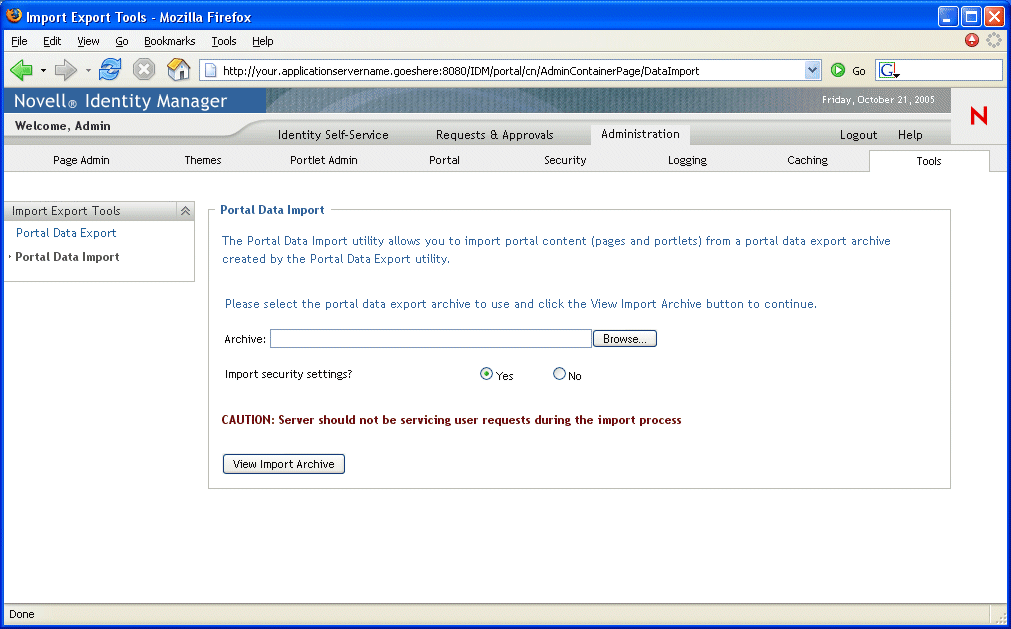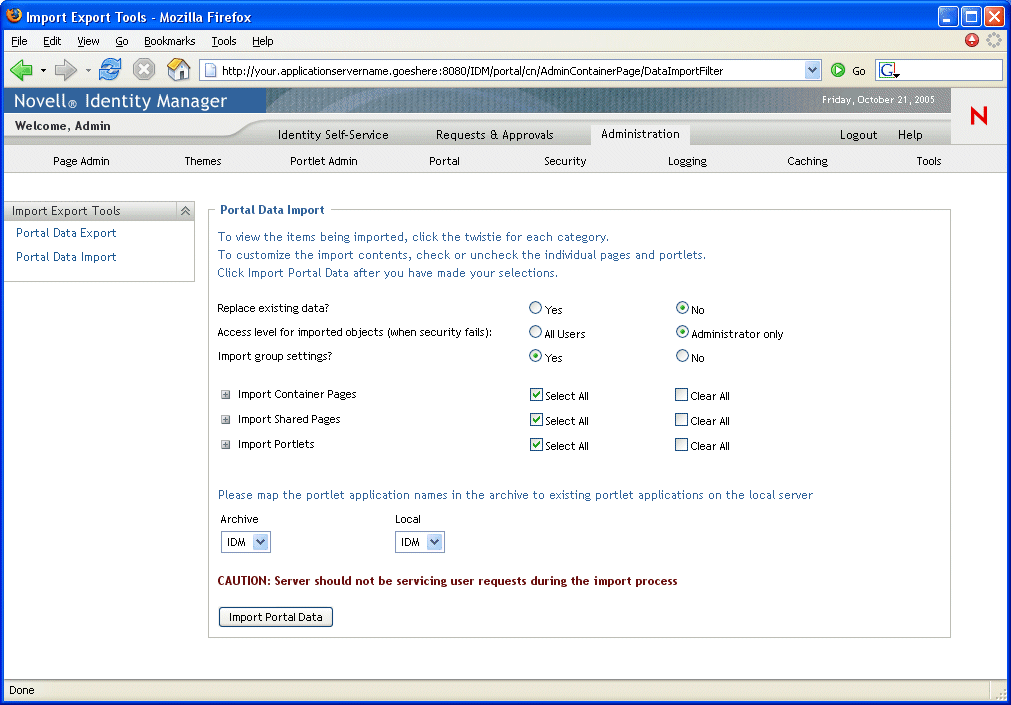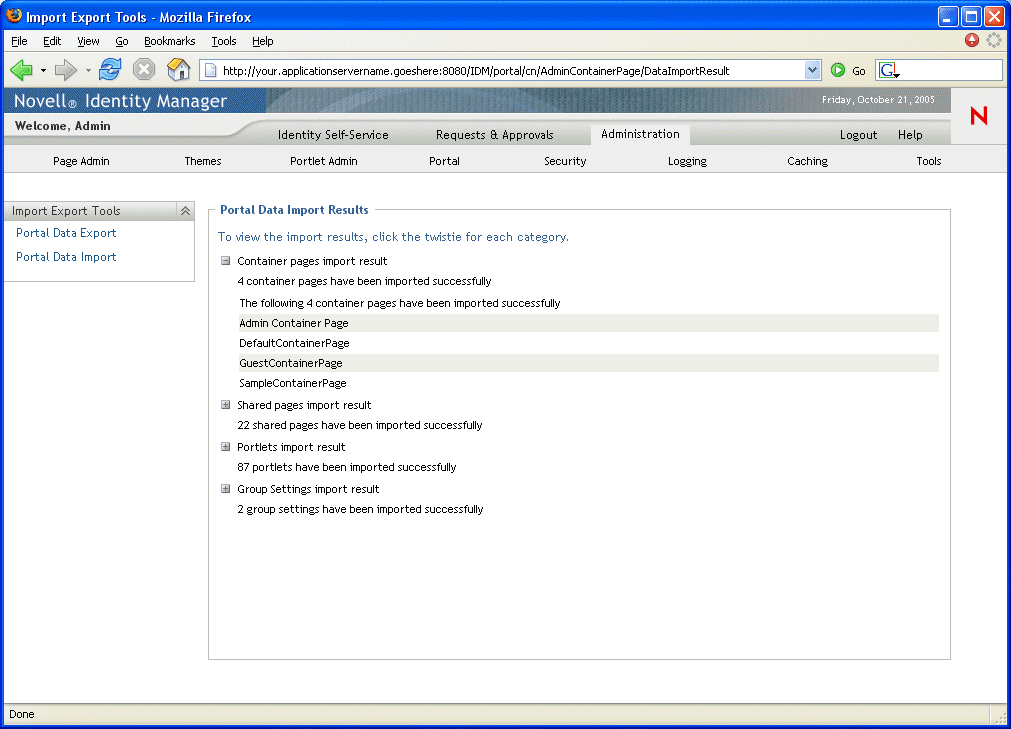14.3 Importing portal data
This section describes how to import a Portal Data Export ZIP file to a portal.
NOTE:Remember that, during the import, your target application server must be running but not currently servicing user requests.
To import portal data:
-
On the Tools page, select Portal Data Import from the navigation menu on the left.
The Portal Data Import panel displays:

-
Specify the following general import settings:
-
Click the View Import Archive button.
The panel displays more specifics about your selected Portal Data Export ZIP file and how you want to import it:

-
Specify the following detailed import settings:
-
When you’re ready to begin the import, click the Import Portal Data button.
When the import completes, the Portal Data Import Results panel displays:

Unsuccessful imports display in red. To troubleshoot import (or export) problems, look at your application server’s system console or log file (such as jboss/server/IDM/log/server.log) for messages from the following user application log:
com.novell.afw.portal.util